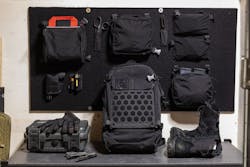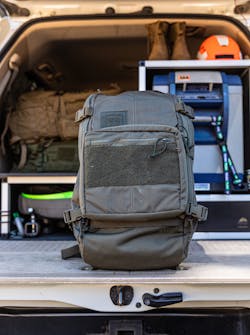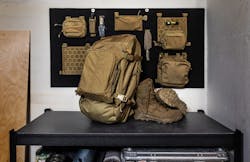5.11 Tactical in the Wilderness: A Review of AMP Bags
When you are in a remote environment and in “survival mode,” the equipment you have with you is critical. What many don’t understand is that 1) you are always in survival mode—there just may not be immediate threats, and 2) “the equipment you have with you” means on your person. What’s in your SUV or pickup truck three miles away is of no use to you if you can’t get to it. All you have is what’s on your person. In your pockets. On your belt. On your vest. In your pack.
For decades the backpack options were limited to what was stitched together. Sure, there was a wide variety of such in different sizes, materials, with and without frames, etc. but what you bought was what you got and were stuck with. Many people got creative and plenty of amateur seamstresses customized their own packs after having determined a need. But wouldn’t it be great if you could customize your pack to your need without having to sew, cut, measure, cut, sew, etc.? Enter the 5.11 Tactical AMP series of packs.
First, pick your pack. With internal volume generally described now in liters, you can choose from the AMP72 40L, AMP24 32L, AMP12 25L, AMP10 20L, or the AMPC Pack 16L. For use in remote wilderness areas, as a pack to literally survive out of, we’d recommend you use the AMP24 (at a minimum) or AMP72. They have ample storage space for carrying shelter, comfort, food, and other items. Now, depending on your mission and your skill sets, which Gear Set you put on the face of the pack or inside is your choice. Yes, 5.11 Tactical makes eight different gear sets options you can attach to your AMP pack.
Each are named but their labels shouldn’t limit how you view their use. For example, the “Admin Gear Set” is great for carrying items that have nothing to do with administrative duties or needs. It can carry fire starter items, first-aid items, spare batteries, flashlights, folding knives, tools, and more. There are also three different gear sets that are attachment panels allowing you to mount pouches on the face of the pack—just in case there are MOLLE pouches you want to use that are different from the available gear sets.
5.11 Tactical has a Laser Cut MOLLE Gear Set that allows you to vertically mount MOLLE pouches and has a couple of strips of hook-and-loop if you want to put on patches. They also have their patented HEXGRID platform that allows you to mount MOLLE pouches vertically, horizontally, or on the diagonal. The company has over 30 different pouches available on their website, but since we’re talking about MOLLE mounted pouches, you’re not restricted to those manufactured by 5.11.
Doing some pretty basic math, if you have five different pack sizes to choose from with eight different gear sets and thirty pouches, you have 1,200 possible configurations for your pack. (This is a law enforcement publication, not a mathematical oriented one. If the math is incorrect, cut us some slack.) There will also be situations that don’t call for a pack at all, but you’d still like to have a particular pouch or gear set available to you. For those situations, 5.11 Tactical makes the All Missions Rig which is essentially a worn chest platform that accepts any of their gear sets. Relocating a gear set from a pack to the All Missions Rig might take three minutes.
The benefit should be obvious for those who do work in remote locations and who have to depend on what’s in their pack to survive—hopefully with some semblance of comfort. Every mission is different. Every circumstance is different. Officers and rangers who are planning to be out for a few days can prepare and pack accordingly. Those who are “temporarily” on foot and away from their vehicle and then find themselves not-so-temporarily on foot and forced to survive until they can change their circumstances face different challenges. But the needs stay the same: food, water, shelter, warmth, health.
Before you find yourself in that position, re-examine the equipment you have. What are the capabilities of your pack? In what way does it need to be modified? What aren’t you carrying that you would like to? How easy is it to change out any of the kit as your mission or needs change? The beauty of the AMP packs is that you can leave the main body of the pack stocked “as usual” but then switch out the gear sets or pouches as necessary to conform as your mission changes.
About the Author
Lt. Frank Borelli (ret), Editorial Director
Editorial Director
Lt. Frank Borelli is the Editorial Director for the Officer Media Group. Frank brings 20+ years of writing and editing experience in addition to 40 years of law enforcement operations, administration and training experience to the team.
Frank has had numerous books published which are available on Amazon.com, BarnesAndNoble.com, and other major retail outlets.
If you have any comments or questions, you can contact him via email at [email protected].



